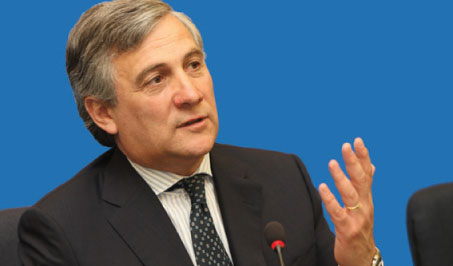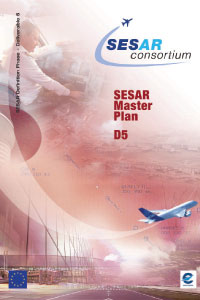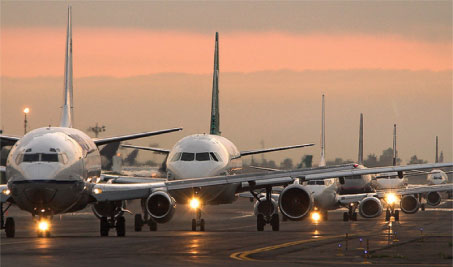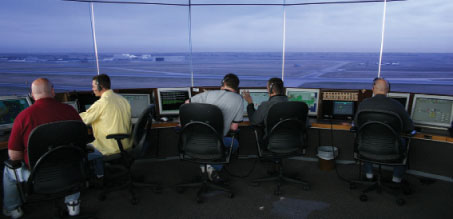
European Commission Vice-President responsible for transport, Antonio Tajani: “This package is a win-win for passengers, for Europe’s economy and for the environment. The skies in Europe are still fragmented. As a consequence, flights are on average 49km longer than needed.”
The first SES package promoted by the European Commission back in 2004, has not delivered a truly ‘Single’ sky for Europe. This is due to the resistance of many Member States, which has rendered cross-border integration of ATM extremely slow. However, the continuous growth of demand experienced over the last years, coupled with an increasing environmental pressure on aviation due to Climate Change and the emphasis of airlines on cutting costs, has resulted in a momentum which prompted the European Commission to re-launch the Single European Sky project, with a target for 2020 to finally unify the skies of Europe.
The focus of this second package is clearly on sustainability for aviation and on performance improvement, not only in relation to ATM processes and costs, but also in relation to safety and capacity on the ground. Significantly, SES II is based on a ‘total system approach’, which will see a better integration between ground and air, with the overarching objective to manage a doubling of air traffic by 2020. As a result, the package consists of four pillars all closely related: a revision of the existing SES Legislation, an extension of the competences of EASA (European Aviation Safety Agency) to aerodromes and ATM, the SESAR Master Plan resulting from the definition phase of this very important project and an EU policy for airport capacity.
Antonio Tajani, European Commission Vice-President responsible for Transport, said: “This package is a win-win for passengers, for Europe’s economy and for the environment. The skies in Europe are still fragmented. As a consequence, flights are on average 49km longer than needed. Our proposal aims at helping reduce queues to take off and land, passengers will have more chance of arriving on time. At the same time the package will help us deliver safer and greener flying, while creating more capacity.”

The two-year Definition Phase of SESAR, which was completed in March, delivered the ATM Master Plan that forms the basis of the Development Phase and future strategy for the SESAR JU. It is a concept document that will evolve and be refined.
ACI EUROPE warmly welcomed the new SES II package, especially in relation to its fourth pillar dealing with airport capacity issues. Indeed, ACI EUROPE has long been calling for the EU to deal with this issue, stressing the danger of an approach for SES that would be exclusively based on capacity in the sky, without making the necessary link and alignment with capacity on the ground. Its efforts appear to have paid off, even if the implementation and follow-up of SES II will be crucial to confirm the ‘total system approach’.
ACI EUROPE Director General Olivier Jankovec said: “We are very pleased to see that Commission Vice President Antonio Tajani has been quick to follow in the footsteps of his predecessor on what is a vital issue for European aviation. Given that everyone agrees on the expected economic and environmental benefits, there is no longer any excuse for Member States not to act and deliver a truly Single European Sky, especially under the present circumstances. This has become a matter of credibility for the EU.”
On the issue of airport capacity, he added: “We at ACI EUROPE have – for some time now – been highlighting the need to create additional capacity on the ground, so that a balance can be maintained with all the capacity that will be created in the air. Building new airport capacity is infinitely more complicated than acquiring new aircraft and we feel vindicated today that the need to align airport capacity with ATM capacity has at last been recognised.”
Environmental Gains
The SES II package places environmental issues at the core of the Single European Sky, with improved air traffic management expected to realise significant reductions in greenhouse gas emissions. A 10% improvement is expected per flight, which amounts to 16 million tonnes of C02 savings per year and a €2.4 billion reduction of annual costs.
The first pillar – regulating performance – introduces several enhancements to the original SES legislation, including binding performance targets for air navigation service providers, a European network management function to ensure convergence between national networks and a definitive date for Member States to improve performance through Functional Airspace Blocks – at the latest by end-2012.
The second pillar of SES II – Safety – provides for increased responsibilities for the European Aviation Safety Agency (EASA). The stated intention is precise, uniform and binding rules for airport safety, air traffic management and air navigation services. While receptive to all safety enhancements to the European network, ACI EUROPE remains concerned about the extension of competences of EASA to cover airport safety issues based on a one-size-fits-all approach, notably when it comes to its impact on regional airports.
SESAR Joint Undertaking
The third pillar concerns technology and the SESAR (Single European Sky ATM Research) programme is at the heart of it. SESAR brings together aviation stakeholders to develop and operate a new generation, Europe-wide air traffic management system. Its deployment will enable the safe, sustainable and cost-effective handling of twice the current traffic by 2020. SESAR also aims to increase safety by a factor of 10. The Definition Phase (2004-2008) is complete and the Development Phase (2008-2013) is now underway.
The SESAR Joint Undertaking (JU) was created under European Community law in February 2007 to manage the six-year Development Phase. “The Joint Undertaking is the first of its kind in the ATM world,” said Patrick Ky, Executive Director of the SESAR JU. “SESAR is mostly about partnerships with industry. I believe that the Joint Undertaking is the right approach to make things work; our research, development and validation activities will be done as close as possible to the operational world and industries.”

European Commission Vice-President responsible for transport, Antonio Tajani: “Our proposal aims at helping reduce queues to take off and land, passengers will have more chance of arriving on time. At the same time the package will help us deliver safer and greener flying, while creating more capacity.”v
More Visibility for Airport Capacity
The fourth pillar – managing capacity on the ground – is critical for European airports. This pillar builds on the Communication of the European Commission of January 2007 on ‘Airport capacity, efficiency and safety’ which was the first real attempt to develop a policy in this field at EU level. Indeed, to this day, some Member States continue to be wary of European action and consider that these issues are of exclusive national and local competence. They fail to appreciate the necessary link between infrastructure in the air and on the ground, as well as the fact that the looming airport capacity crunch has become an issue of European interest given its implications. However, the fourth pillar now goes beyond the above mentioned Communication in terms of policy message. It clearly refers to the need to align ATM and airport capacity objectives and states that the necessary investments in airport capacity need to be made. This is a vital recognition that optimising existing airport capacity will not be enough and that Europe will need new airport infrastructure.
Speaking at a Seminar on SES II organised in Brussels on 8 October and which gathered all EU Institutions, Member States, Industry and labour organisations, Jankovec stressed the importance of the fourth pillar and called for the alignment of airport and ATM capacity objectives to guide the action of the EU. In more detail, the fourth pillar provides for the establishment of an EU Observatory on airport capacity, which will be tasked with providing an inventory of airport capacity in Europe and following up developments in this regard. The Observatory will meet for the first time on 4 November 2008 in Brussels and ACI EUROPE will of course be a member. The fourth pillar also provides for measures aimed at better use of existing infrastructure, (including a necessary alignment of ATM and airports slots), improved infrastructure planning and the promotion of intermodality and access to airports.

SES II seeks to better coordinate slots issued with air traffic management measures.
The SES II package is now being examined by the European Parliament in its first reading and by the Council. Progress should be swift on the first, third and fourth pillar, while the second pillar on the extension of the EASA competences appears to be more problematic. Several Member States do share the concerns of ACI EUROPE and more work probably needs to be done the refine the conditions under which EASA would exercise its proposed new competences to aerodromes and ATM safety.







